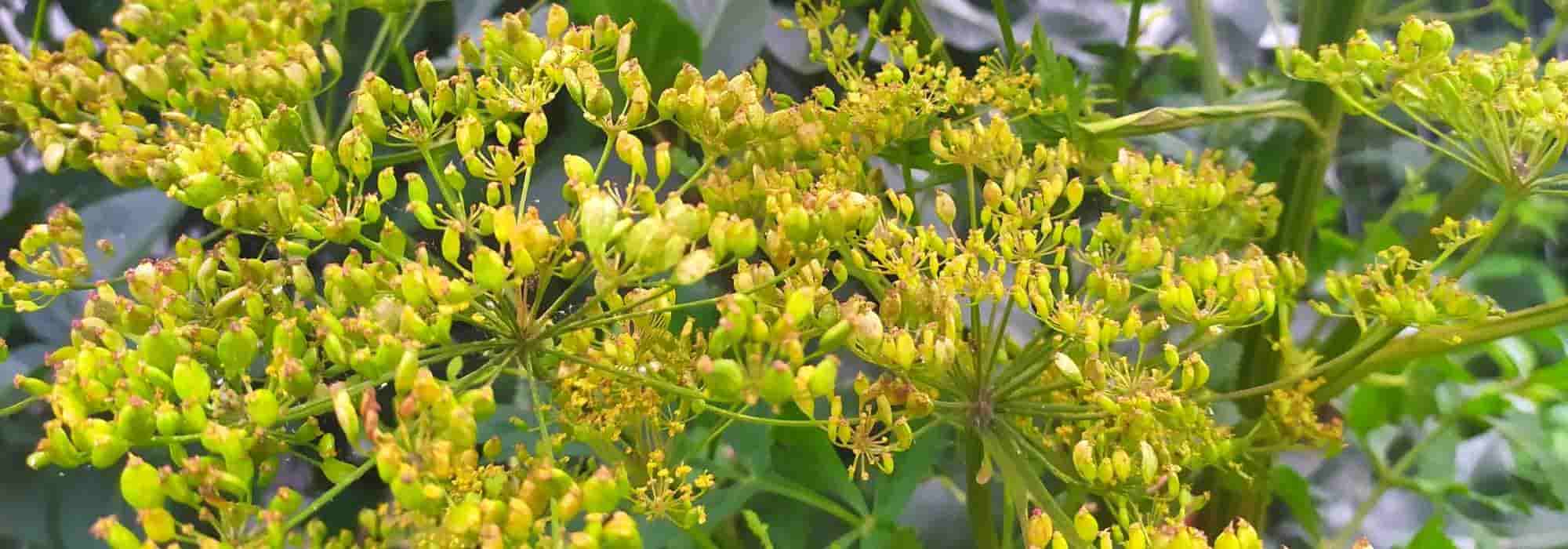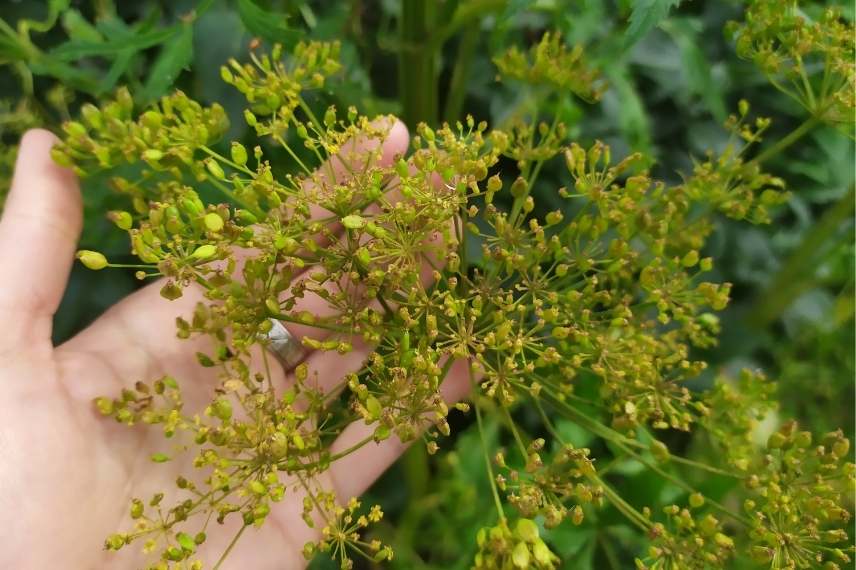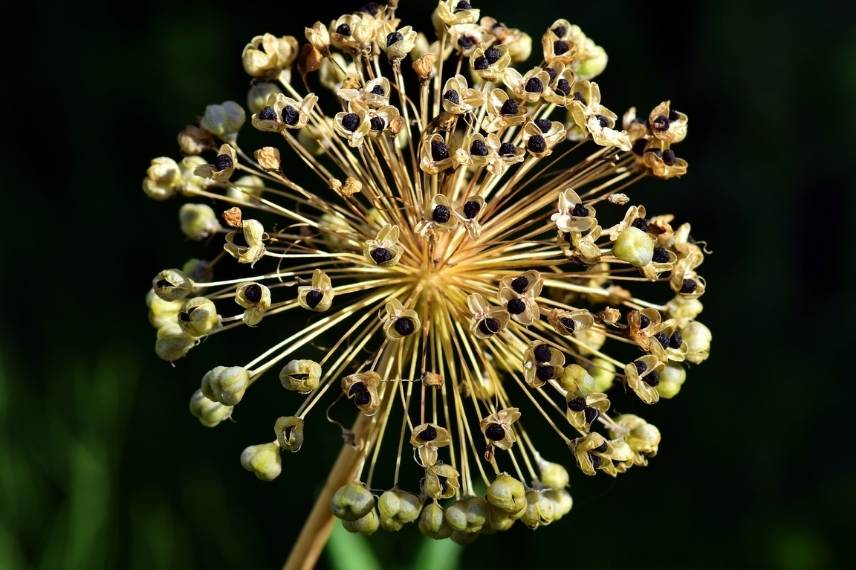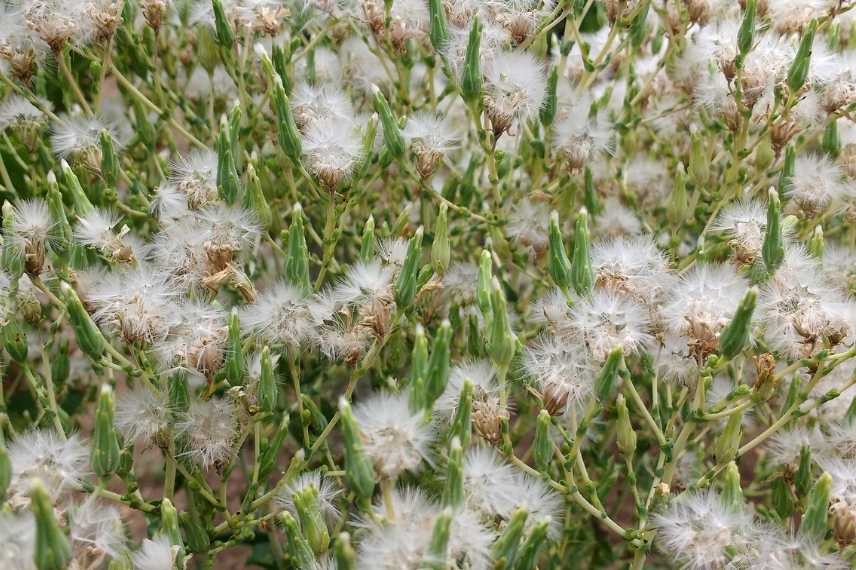
Bolting: when plants are going to seed
What is bolting? How to avoid it?
Contents
Growing your vegetables in the garden is a true pleasure, but also real work. We pamper the salads, we nurture the carrots, we whisper to the radishes, and then, just like that, overnight, these ungrateful plants decide to bolt! And without any warning! The harvest is then compromised, and we are often left feeling disheartened, it must be said. But what exactly is bolting? Can we prevent it? And if so, how? Follow us, and we will explain everything about bolting.

A parsnip bolting
What is exactly bolting?
To understand the bolting process, one must first know the different life stages of a vegetable plant.
Phase 1: growth
The growth phase is also known as the vegetative phase. This is the period during which the young plant develops its root system and grows. As it grows, the plant stores its resources.
Phase 2: reproduction
Once the plant has stored enough resources, it moves on to the reproduction phase. The plant then develops one or more flower stems. Flowers appear in order to produce seeds. This is the famous bolting process.
For the gardener, the bolting of fruiting plants (such as tomatoes and apple trees) signals a future harvest of fruits.
On the other hand, the bolting of root or leaf vegetables (carrots, lettuces, etc…) is a sign of a failed harvest. Why? Because root vegetables then become hard and fibrous. The foliage of leaf vegetables wilts, yellows, and its taste becomes bitter. They thus lose their taste and nutritional qualities. In short, they become inedible. Leafy and root vegetables must be harvested before the end of the growth phase.

leek seeds
Why do plants go to seed?
In most cases, bolting begins once the plant has reached the end of its growth. However, what gardener hasn’t experienced premature bolting? Indeed, other factors can come into play. Nature being unpredictable, the plant may undergo stress, prompting it to produce seeds prematurely to ensure its offspring. Here is a non-exhaustive list of causes of bolting:
The maturity of the plant (simply put):
As we saw in the first chapter, a plant that has grown sufficiently large and robust will naturally bolt.
Temperature
Temperature fluctuations can hasten bolting. Thus, days that are too hot, but especially nights where the temperature does not drop below 18°C, can encourage bolting.
Similarly, abnormally low temperatures for the season lasting several days can trigger early flowering. This is often the case with biennials that require a cold period to initiate flowering.
Day length
The lengthening or shortening of the day is a valuable indicator for a plant. For some, it signals that it is time to bolt. Thus, day length greatly influences the life cycle changes of a plant.
Lack of water
A lack of water and drought cause significant stress to the vegetable plant. Some plants will then halt their growth to ensure seed production and the survival of the species.
Vegetative competition
The calm of the garden should not deceive you, as underground, a root battle is taking place. The goal? To obtain the most resources. Problems arise when different vegetable plants compete for the same nutrients. They may even deplete the soil’s resources. Similarly, when plants with the same root system at the same depth are too crowded. All this root competition leads to stress, causing the plants to start producing seeds.
Soil that is too poor
A lack of nutrients in the soil can cause stress to the plant. It no longer has enough nutrients to continue growing. Therefore, it decides to produce seeds with the little reserves it has left. Lettuce bolting prematurely in hot and dry weather
Lettuce bolting prematurely in hot and dry weather
Which vegetable plants are involved?
Here is a small list of vegetables that go to seed:
Annual vegetables:
- broccoli
- Chinese cabbage
- cauliflower
- spinach
- lettuce
- lamb’s lettuce
- radish
- rocket
Biennial vegetables:
- beetroot
- Swiss chard
- carrot
- celery
- turnip
- onion
- parsnip
- leek
How to prevent bolting?
Seasonal planting
By planting or sowing at the right time of year, you will avoid stress from cold, heat, or day length for your vegetable plants. This will limit their desire to reproduce. Refer to the sowing and harvest dates on the packaging, which are good indicators. For example, radishes sown in summer will be more fibrous, pungent, and will bolt to seed faster than at other times of the year.
→ Check out our article: How to plan and stagger your harvests?
Keep a garden journal
Maintaining a record of sowings and harvests is a good way to prevent bolting. This allows you to calculate and anticipate the ripeness period for harvesting. I admit I have forgotten when I sowed radishes before. Two months later, they were bolting right under my nose. At that time, a garden journal or a planting calendar would have saved me from this mishap.
→ Discover our guide on the garden journal: an essential tool!
Make the right associations
To avoid root competition and stress for the plants, it is better to associate vegetables with different root systems. For example, corn, which has a shallow root system, will thrive alongside squash with an intermediate rooting depth. They can also be paired with climbing beans that have deep roots. This way, we limit competition and stress for our plants.
→ We explain, in this article, the association of crops in the vegetable garden
 Corn, climbing bean, and squash (Milpa): a partnership recognised for thousands of years
Corn, climbing bean, and squash (Milpa): a partnership recognised for thousands of years
Maintain a nutrient-rich soil
Ensure your soil is always rich in nutrients. If your soil lacks nutrients, there’s no doubt your plants will bolt prematurely. To prevent this, rotate your crops. Add well-matured compost once a year. You can also apply a mulch made of grass clippings and leaf litter. During the resting period, you can also sow green manure that will enrich the soil once mowed.
→ Find our article on green manure and its benefits
Water regularly
Lack of water can cause rapid bolting. This is the case for lettuces, which dislike dry soil. In case of high heat or drought, water your vegetable garden in the evening. Night watering also helps to cool your plants. Finally, mulch your vegetables! This helps prevent rapid evaporation of water, keeps the soil cool, and allows you to space out watering.
Monitor the weather
By keeping an eye on the weather forecast, you can anticipate changes that may cause bolting. For example, in the event of a cold snap, you can set up a cloche over the carrots. This way, they can continue to grow. Similarly, if high temperatures are forecasted, you can harvest your radishes earlier than planned, before they become tough and pungent.
Be proactive
By regularly visiting your vegetable garden, you can observe the early signs of flower stalks appearing. If this is the case, cut them off and harvest your vegetables immediately.
Choose resilient varieties
Some varieties of legumes are more resilient to climatic fluctuations. They are generally slower to bolt, such as the Egyptian black flat beetroot and the Batavia lettuce Reine des Glaces.
To go further:
- If your young plants have gone to seed, take the opportunity to harvest them. We explain how to do this in our article: making your seeds, harvesting them, and storing them properly.
- Find all our varieties of vegetable seeds as well as young plants.
- Discover our article on the garden diary: an essential tool!
- We explain in our article how to plan your vegetable garden: rotations and associations in 5 steps.
- Subscribe!
- Contents
































Comments